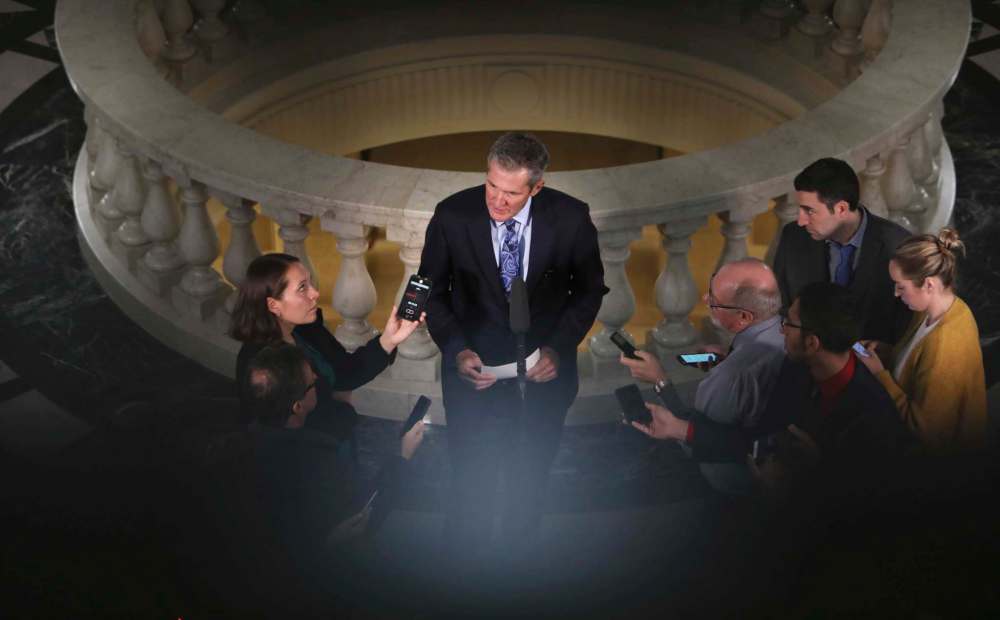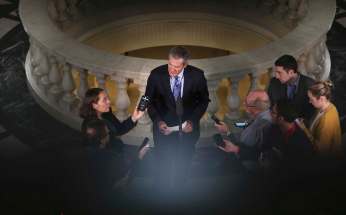Manitoba’s next step: where to draw line on civil service numbers
Read this article for free:
or
Already have an account? Log in here »
To continue reading, please subscribe:
Monthly Digital Subscription
$0 for the first 4 weeks*
- Enjoy unlimited reading on winnipegfreepress.com
- Read the E-Edition, our digital replica newspaper
- Access News Break, our award-winning app
- Play interactive puzzles
*No charge for 4 weeks then price increases to the regular rate of $19.00 plus GST every four weeks. Offer available to new and qualified returning subscribers only. Cancel any time.
Monthly Digital Subscription
$4.75/week*
- Enjoy unlimited reading on winnipegfreepress.com
- Read the E-Edition, our digital replica newspaper
- Access News Break, our award-winning app
- Play interactive puzzles
*Billed as $19 plus GST every four weeks. Cancel any time.
To continue reading, please subscribe:
Add Free Press access to your Brandon Sun subscription for only an additional
$1 for the first 4 weeks*
*Your next subscription payment will increase by $1.00 and you will be charged $16.99 plus GST for four weeks. After four weeks, your payment will increase to $23.99 plus GST every four weeks.
Read unlimited articles for free today:
or
Already have an account? Log in here »
Hey there, time traveller!
This article was published 03/10/2019 (2262 days ago), so information in it may no longer be current.
Manitoba taxpayers may be asking themselves an important question this week: if the provincial government can get by with 2,000 fewer civil servant positions on the payroll, why wasn’t it trimmed by that amount years ago?
Tories cut 2,000 civil-service positions in three years

Posted:
The Progressive Conservatives have reduced the size of the Manitoba civil service by more than 2,000 positions since they came into office in 2016.
It’s a reasonable question, considering salaries and benefits make up more than $8 billion of the province’s $17-billion budget.

When it comes to controlling government spending, personnel costs are by far the single largest expense. When those costs are allowed to grow unfettered (as they did under the previous government), it’s difficult, if not impossible, to avoid perpetual deficits.
Until 2016, salaries and benefits costs were growing by about $300 million a year. Since then, they have been stabilized.
The main reason is the Pallister government has reduced the size of the Manitoba civil service by 13.7 per cent, to 12,839 employees (from 14,876) over three years. Those figures do not include outside organizations such as hospitals, schools, post-secondary institutions or Crown corporations.
These are strictly provincial government jobs; the reductions applied across most departments.
Other than a mandated 15 per cent reduction in upper management, the vast majority was achieved through attrition. Resignations made up 49.4 per cent, 32.5 per cent were retirements, and 14.4 per cent were term/contracts that had expired, according to the Civil Service Commission’s latest annual report.
With a turnover rate of 9.3 per cent in 2018-19 (up slightly from 8.5 per cent the previous year), government can decide whether to replace departing employees or leave the positions empty. In 2018-19, 1,957 people left the Manitoba civil service; more than half of those were replaced. The size of the civil service was reduced by 882 last year.
The question now is: what is the optimal size of the provincial government’s workforce?
The Progressive Conservatives’ stated goal when they won government in 2016 was to reduce the size of the civil service by 1,200 positions. They have exceeded that, and appear content to leave levels where they are.
However, they haven’t confirmed that stance, saying only they will continue to seek out “efficiencies.”
The goal of reducing the civil service by 1,200 was arbitrary. It wasn’t based on an objective analysis of government’s human resource requirements, nor was the 2,000 figure. It’s clear government had to get its labour costs under control, but now it needs to figure out where to draw the line on civil service numbers.
Naturally, opposition parties are crying foul. They not only believe in larger government, they argue the province should hire people as a strategy to promote economic growth. They want the provincial government to be an employment agency whose primary goal is to provide jobs for Manitobans.

Not only is that a confusion of roles, it’s expensive.
NDP Leader Wab Kinew complained during legislative committee hearings this week cutting 2,000 civil service jobs has an adverse impact on the economy. He didn’t mention how a bloated public service has impacted taxpayers over the years — the other side of the coin opposition parties and public-sector unions conveniently ignore.
In order to pay for the $300-million annual increases in personnel costs, the former government had to raise taxes (which it did in 2012 and 2013) and had to borrow money to pay for daily operating costs (as the province has been doing since 2009).
It’s unlikely most Manitobans want their tax dollars used in such a fashion. What they probably want is for the province to figure out the optimal size of the civil service — what jobs are truly required and which are not.
There will never be a black-and-white answer, but there should be some analysis performed to guide those decisions, especially in critical areas (such as corrections).
In the meantime, there appears to be little evidence shedding 2,000 positions has thrown the civil service into chaos.
It looks like taxpayers have simply been paying for a super-sized public service they didn’t need.
tom.brodbeck@freepress.mb.ca

Tom has been covering Manitoba politics since the early 1990s and joined the Winnipeg Free Press news team in 2019.
Our newsroom depends on a growing audience of readers to power our journalism. If you are not a paid reader, please consider becoming a subscriber.
Our newsroom depends on its audience of readers to power our journalism. Thank you for your support.










